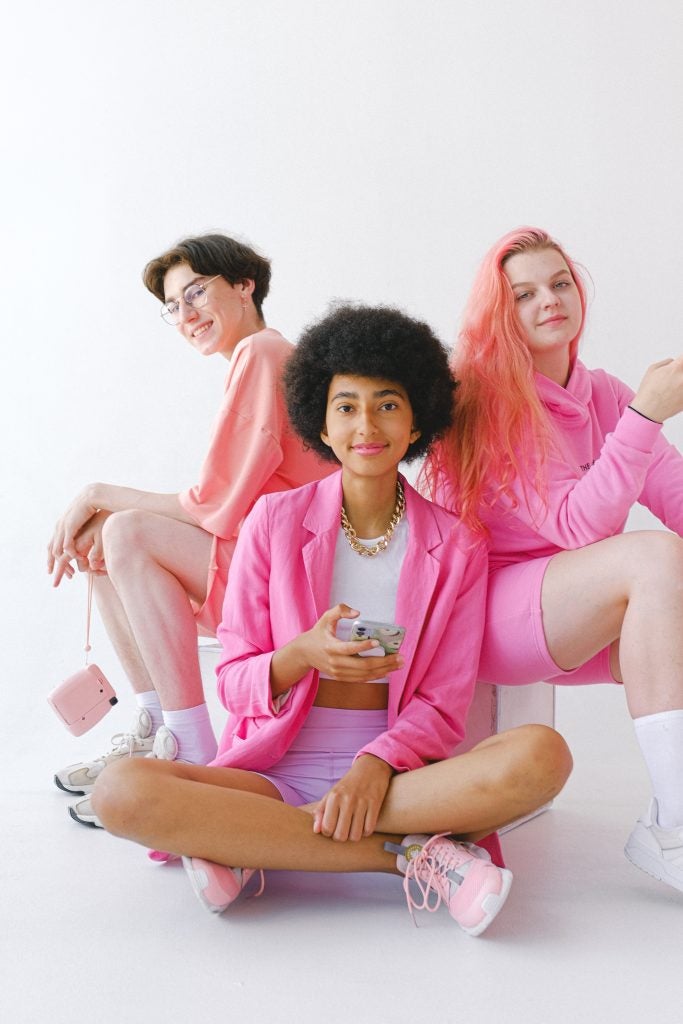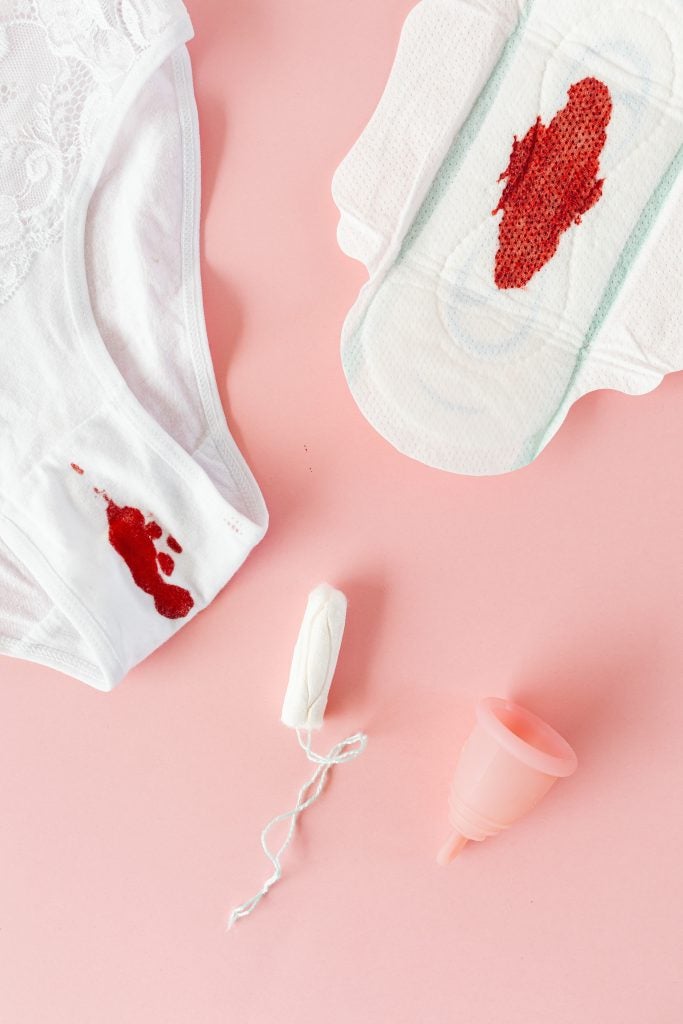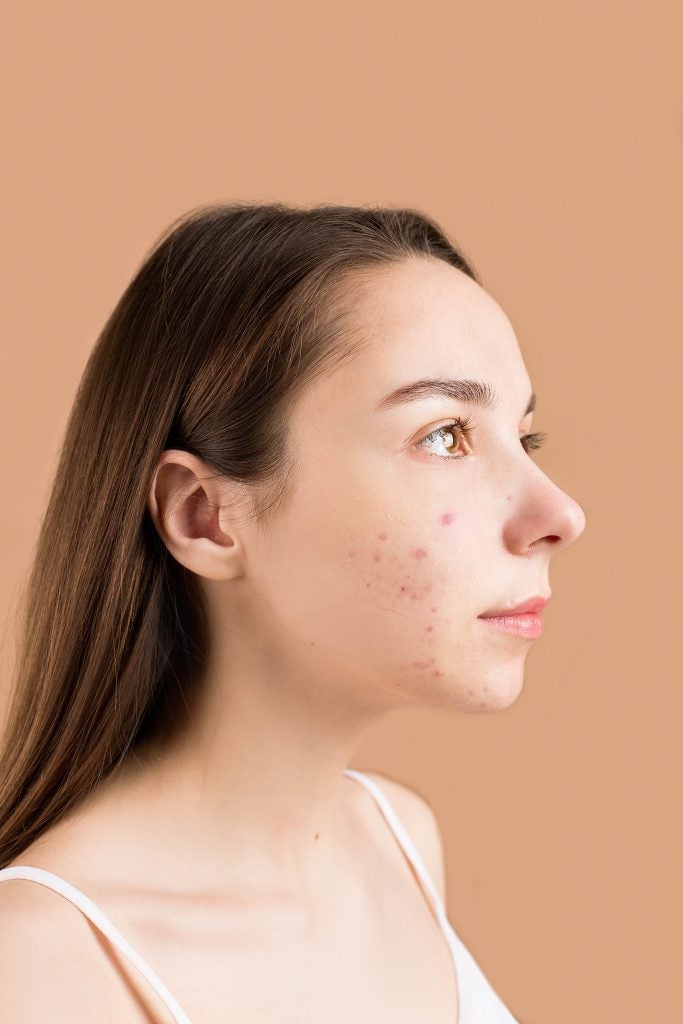
Puberty is a stage of development during which boys’ and girls’ bodies begin to develop and change into those of young men and women. During puberty, the body grows faster than it has since the first year of life. It is important to realize that everyone goes through the changes, embarrassments, and confusion that can be associated with puberty—it is a normal and necessary process! Although your friends may experience the changes sooner or later than you, eventually everyone will develop the bodily characteristics of an adult female. While these changes are similar for many people, remember that variation is normal, and no two people are exactly alike. There is no right or wrong way to develop; that is the beauty of the human body!
Table of Contents
When Do Women Hit Puberty?
When the human body reaches a certain weight (which depends on the person, but is usually around 12 years old), a part of the brain, called the hypothalamus, initiates the start of puberty. Boys and girls begin to go through similar stages of physical changes, but at different times. In general, when a person is between 8–18 years old, hormones are released that create changes in the female and male reproductive systems.
Girls usually begin puberty usually two years earlier than boys do. The age when a girl starts puberty can be very different among girls, so if you start earlier or later than your friends, it is perfectly okay! Every person is made up of different sets of genes and complex bodily functions, which causes some to develop earlier (“early bloomers”) and others later (“late bloomers”). In general, girls begin to notice the various following changes during puberty.
Breast Growth
The breasts begin to develop into breast buds, around the ages of nine or 10. Sometimes, one breast may develop faster than the other, but they often even out over time. However, it is common for one of a woman’s breasts to be larger or smaller than the other. More often than not, adult women claim to possess two different sized breasts and can almost always indicate which breast is bigger or smaller. In this way, it is perfectly normal and healthy to have breasts of different sizes and should not be viewed as negative or scary.
Breasts develop at different rates for every female. There is no way to speed up or slow down breast growth. If you or a few of your friends are developing more quickly or slowly than your classmates, it is okay and there is nothing to be afraid of! Allow your breasts time to grow and develop; they will, we promise! Until then, learn to love your body, and understand that breast size does not determine beauty, sexuality, or identity.
Menstruation

For more information about menstruation, please visit our article “Your First Period (Menarche)”.
Approximately 1-2 years after the beginning of breast development, girls may experience their very first menstrual period. During the menstrual cycle, the period during which the body prepares for a possible pregnancy, an unfertilized egg is released from one of the two ovaries, travels to the the uterus, a pear-shaped organ also referred to as the “womb.” While the egg is on its journey from the ovary, the uterus builds up its inner lining with extra tissue and blood to prepare for implantation. If the egg is fertilized (combines with a male gamete sperm cell), it will implant itself inside the lining of the uterus, now nourished with tissue and blood, and begin developing into a child. When the egg is not fertilized, implantation does not occur, and the built-up endometrial tissue and blood goes out through the vagina. This release of the blood is because fertilization has not happened. This is what makes the period. The menstrual period lasts an average of five to seven days. Typically, bleeding is heaviest during the first three to four days of menstruation and then begins to lighten. In a regular 28-day cycle, two weeks (14 days) after menstruation begins, another egg is released from one of the ovaries in a process called ovulation.
Some girls experience irregular menstrual periods for several years before their cycles become regular and predictable. It is perfectly normal to have periods longer or shorter than the average of five to seven days or miss periods altogether. However, if you are sexually active and not using a type of birth control (Condoms, IUD, Combination Pill, etc.) a missed period may indicate pregnancy. During their periods, girls may experience bloating, moodiness, bodily aches, abdominal cramping, vomiting, fatigue, headaches, and heightened emotionality. Some of these physical side effects can be relieved with over-the-counter medications ( Advil, Ibuprofen, Midol, etc.).
The Vulva during Puberty
A female’s sexual organs change a lot during puberty. The vulva (pictured below)—a term that refers to all the external features of the female genitalia, including the labia, clitoris, and mons pubis—experiences an incredible transformation. To see a detailed illustration and description of the various parts of the vulva, please visit our page on female anatomy. The vulva is a primary source of sexual pleasure for women, and it is important that all women be familiar with this part of their anatomy.
Are All Vulvas the Same?

There is a huge amount of variation among women in the color, size, and shape of their vulvas, just like any other body part. These variations are natural and do not have a direct effect on reproductive function or sexual pleasure. Women can explore their vulva by standing or sitting in front of a mirror with their legs spread apart or holding a mirror between their legs while propping one leg up. If you find, while exploring, that your vulva does not really look like the ones you have seen on this web site, in magazines, or elsewhere, do not worry! Each person’s body is different, and as we have mentioned, difference is the key to human beauty.
Vaginal Discharge and Odor
Some common concerns about the vulva are the discharges and smells that are sometimes associated with it. With the onset of puberty, the vagina begins producing a discharge (called leukorrhea) that acts primarily as a defense against germs. This discharge varies slightly in texture and color between individuals but usually has a smooth slightly sticky texture and is clear, white, or off-white in color. In this way, the vagina can be compared to a self-cleaning oven because it ensures that no bacteria or other harmful substances enter it. This discharge is the byproduct of vaginal cleaning. A different type of discharge is produced in the vagina when a woman becomes sexually aroused. (It is clear and slippery and serves serving as a natural lubricant.) Every woman’s vulva has a unique smell that may be sexually arousing to her and her partner. Fishy, yeasty, or other foul smells emerging from the vulva may indicate the presence of an infection and should be checked out by a healthcare professional.
Vulva Maintenance
To keep your vulva healthy, simply eat healthily, exercise on a regular basis, wash it regularly with gentle soap and water, and wipe from front to back after going to the bathroom. If you wipe from back to front, you may accidentally infect the vagina with agents from the anus.
Check out this article for more information on the vulva and all of its parts.
Changes in Body Shape
Girl’s figures develop womanly curves as they gain weight in areas such as their hips. This extra weight is an important part of becoming a woman. There are many theories as to why this happens, but the most common one is that wider hips attract more mating partners. Wider hips are also useful during childbirth for both the mother and baby because they allow for a wider birth canal. Overall, girls tend to fill out all over the body and develop curves as they grow older. These curves should be embraced and understood as natural and normal occurrences in female puberty.
Acne

Increased activity of the oil-secreting glands in the skin causes the emergence of pimples, but acne usually disappears with the completion of puberty. If acne becomes or remains a particularly difficult issue, there are several drugstore acne cleansers, such as Cetaphil and Neutrogena, that may help. If none of these cleansers work or acne seems especially extreme, we recommend visiting a dermatologist. They are able to prescribe cleansers and/or creams which may be more effective.
Remember, puberty is a time of great change. If you are confused or scared about any aspects of puberty, do not be afraid to approach your parents, adult relatives, or other mentors and ask them questions. After all, they too have gone through puberty! If you would like to explore additional resources, we have listed several at the end of this article.
Body Hair
Chest Hair
Women may start to notice stray hairs around their nipple’s areolae (the lighter-toned circle of skin around the nipple). This hair is completely normal and natural.
It is not yet definitively known why women have nipple hair, although it is speculated that the reason for growing this hair leads back to primitive times when both male and female bodies needed more body hair to keep them warm. The hormone testosterone has also been linked to the growth of different types of body hair for males and females and may play a role. However, females produce much less testosterone than men and thus have fewer hairs on the chest and face.
The hair can be removed by means of shaving (although this is recommended with extreme caution due to the proximity to your nipple), tweezing, or waxing.
It is important to note that this hair is not dangerous and does not need to be removed. Many women decide against removing this hair and retain a more natural look. Overall, keeping or removing body hair is a woman’s decision and is natural and beautiful either way!
Pubic Hair
Pubic hair is the hair that grows on the mons pubis, around the genital area, and sometimes at the top of the inner thigh. Although some very fine hair may be present in the genital region during pre-pubescent childhood, the term “pubic hair” generally applies to the thick, coarse hair that develops during puberty. In response to the increasing levels of androgens in the body as puberty begins, the skin of the genital area begins to produce thicker and often curlier hair that grows quickly.
The areas of skin which have pubic hair will gradually increase over the next several years after the start of puberty. For most girls, the pubic hair first appears along the edges of the labia majora and spreads over the mons during the next two years. By about the time of the first menstrual cycle, the “pubic triangle” (the area in front of a woman’s pelvic region and below her belly button) is densely filled with hair. Within another two years, the pubic hair can also begin to grow near the top of the thighs. Sometimes a small amount of hair forms a line up to the belly button (informally termed the “happy trail”).
Variations of Pubic Hair
The characteristics of pubic hair differ among people. On some, the hair is thick and coarse while on others it may be sparse or very fine. The color of pubic hair also varies; both pubic hair and armpit hair can differ in color from the hair of the scalp. On most women, the pubic hair patch is roughly triangular, with the top zone lying over the mons.
Attitudes About Pubic Hair
There is a large amount of variation in both cultural and personal attitudes towards pubic hair. Some people consider it to be highly erotic, others may look upon it negatively, while still others may view it neutrally or have no strong opinions about it.
Vocal Changes
The least noticeable change in female puberty is probably the changing of a girl’s voice. Women’s vocal chords do not deepen nearly as much as men’s do, but they do in fact deepen. The slight change allows for a woman’s tone to develop a more adult, lower-pitched sound. Unlike men, women experience this change gradually, their lives and not solely during puberty. Women who sing have been known to lose the ability to hit certain high notes they could sing before their voices matured. Overall, however, the change in a woman’s voice is relatively slight.
Mental Changes
Besides the physical changes mentioned above, the hormonal developments associated with puberty can cause a shift in emotions as well. These changes can lead people to experience new thoughts and feelings about sex, ranging from confusion to arousal, that they had never felt before. You may feel funny about asking your parents or teachers questions pertaining to puberty or sexuality, but asking questions is one of the best ways to learn about the changes your mind and body are undergoing. If you are not completely comfortable speaking with your parents or a teacher, you can talk to a doctor, school nurse or counselor, older siblings, or ask us using our “Ask the Sexperts” submission page.
More Resources
For more information about puberty, check out the following websites:
References
- Peri, Camille and Nazario, Brunilda. WebMD.com. “What Girls Need To Know About Growing Up”. Online Website.
Last Updated: 18 February 2016.
